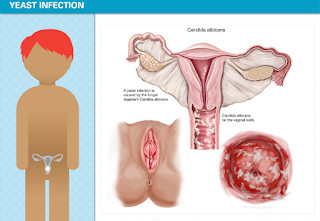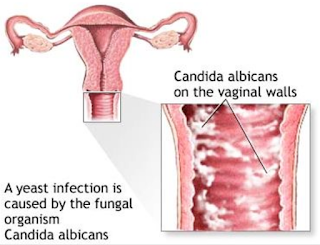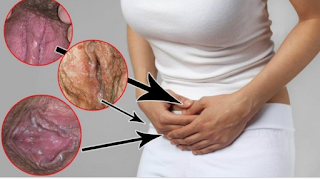EVERYTHING YOU NEED TO KNOW ABOUT VAGINAL YEAST INFECTIONS.
What is a vaginal yeast infection?
A vaginal yeast infection, also known as CANDIDIASIS is a common condition. A healthy vagina contains bacteria and some yeast cells. But when the balance of bacteria and yeast changes, the yeast cells can multiply. This causes intense itching, swelling, and irritation.
Treating a vaginal yeast infection can relieve symptoms within a few days. In more severe cases, it may take up to 2 weeks.

Vaginal yeast infections aren’t considered a sexually transmitted infection (STI), commonly known as sexually transmitted disease (STD). Sexual contact can spread it, but women who aren’t sexually active can also get them.
Once you get a yeast infection, you’re also more likely to get another one.
A specific kind of yeast called CANDIDA ALBICANS causes most yeast infections. These infections are easily treatable.
YEAST INFECTION CAUSES.
The fungus Candida is a naturally occurring microorganism in the vaginal area. Lactobacillus bacteria keeps its growth in check.
But if there’s an imbalance in your system, these bacteria won’t work effectively. This leads to an overgrowth of yeast, which causes the symptoms of vaginal yeast infections.
Several factors can cause a yeast infection, including:
1.Antibiotics, which decrease the amount of Lactobacillus (“good bacteria”) in the vagina
2.Pregnancy.
3.Uncontrolled diabetes.
4.Weak immune system.
5.Poor eating habits, including a lot of sugary foods.
6.Hormonal imbalance near your menstrual cycle.
7.General health – Illness, obesity, poor sleeping habits, and stress can increase the likelihood of developing a yeast infection.
YEAST INFECTION SYMPTOMS.
Vaginal yeast infections have a common set of symptoms, such as:
1.Vaginal itching
2.Swelling around the vagina
3.Burning during urination or sex
4.Pain during sex
5.Soreness
6.Redness
7.Rash
8.Whitish-gray and clumpy vaginal discharge is another telltale symptom.
Some people say this discharge looks like cottage cheese. Sometimes the discharge may also be watery.
YEAST INFECTION PREVENTION
Chances are that you know exactly what led to your yeast infection. For example, some women experience these infections every time they take antibiotics. Whether you know the exact cause, here are some habits you can adopt and avoid to help prevent recurring infections.
1.eating a well-balanced diet
2.eating yogurt or taking supplements with lactobacillus
3.wearing natural fibers such as cotton, linen, or silk
3.washing underwear in hot water
4.Avoid:
(a)Wearing tight pants, pantyhose, tights, or leggings
(b)Feminine deodorant or scented tampons or pads
(c) Sitting around in wet clothing, especially bathing suits
(d)Sitting in hot tubs or taking frequent hot baths
(e)Douching.

Our Candida Detox Pack is going tackle the source of the problem whiles correcting the main problem naturally with no side effects.
YOU MAY ALSO LIKE THIS AS WELL









